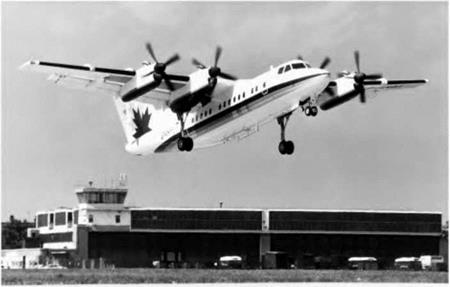The gyroplane
Perhaps the first really practical achievement in this direction was the Cierva Autogiro in 1923 The Autogiro was not a helicopter, but a gyroplane, and a gyroplane differs from a helicopter in one vital particular in that, whereas in a helicopter the wings or blades are rotated by the power of the main engine, in a gyroplane the rotating wings are not driven except by the action of the air upon them, and this in turn is caused by the forward or downward air speed of the aircraft. Thus forward speed is necessary in a gyroplane, just as it is in a conventional aeroplane and, as in the latter, it is provided by the thrust of an ordinary engine and propeller. A modern gyroplane is shown in Fig. 6C (top).
Space does not permit a full consideration of the principles underlying this very interesting flying machine, and it must suffice to say that the secret lies in the fact that by a suitable inclination backwards of the axis the wings rotate automatically in such a way that even when the forward speed of the aircraft is far lower than the stalling speed of a conventional aeroplane the rotating wings are still striking the air at a considerable velocity, and can thus provide sufficient lift to keep the aircraft in the air. In this way the forward speed can be reduced to 5 or 10 knots which, in a slight head wind, means a ground speed of practically nil.
When the Cierva Autogiro first appeared it succeeded in achieving, in one fell swoop, a landing speed such as the experimenters of all nations had considered to be a dream of the distant future. Moreover later developments resulted, in 1935, in a ‘jump start’, or true vertical take-off, achieved by rotating the wings on the ground (by engine power), and then suddenly increasing the pitch, or angle of attack of the blades.
The gyroplane, sometimes called an autogyro (the spelling Autogiro was a trade name), still has its advocates, and still exists in various forms, including very light and simple single-seaters (Fig. 6C).
|
|
|
|
Fig 6C STOL
Top: The autogyro after almost disappearing as an historical curiosity has made a comeback in the form of a popular ultralight.
Bottom: The de Havilland Canada Dash-7, original mainstay of the London City (STOL) Airport. The four propellers provided a’ high-energy airflow over much of the wing.
(Photo by courtesy of Terry Shwetz, de Havilland Canada.)













